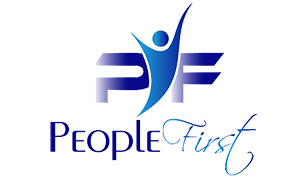
Committment to leadership development, starts at the top!
In my experience one of the biggest differentiators of companies that excel in succession planning and senior leadership development is the commitment and ownership of the CEO or top executive.
However, it isn’t easy. There are no quick or magic solutions. All companies struggle with this challenge, but some handle it better than others. Why, well mostly because they pay attention to it. I’ve worked with a number of senior executives – and have experienced the differences between those that really “get it” and those that don’t. A lot of them only pay it lip service, and have no results to show for it.
So…. what should you do if you “get it”?
Focus on results and don’t let the process be the tail wagging the dog.
I’ve seen way too many organizations get caught up in the process and lose sight of the results. They have a wonderful annual planning meeting with great ideas and tools to implement, but once the meeting is over, nothing really happens until the next year. VPs and senior managers soon catch on that it’s nothing but an exercise, and focus on “looking good instead of being good”. This doesn’t mean that annual planning and business reviews are not important. Events, like annual check-ups, force things to happen that otherwise get pushed aside because they are not urgent. Treat succession planning and leadership development like just client satisfaction or revenue and insist that your HR team provide you with world-class processes and tools.
Make sure your HR VP knows how to do this.
Your HR partner not only needs to know all of the best practices and processes or how to get them, but they must have the ability to influence and be trusted by the executive team, as well as be your own trusted advisor on talent. It’s a tough balance – they may be coaching a struggling VP one day, and recommending to you the same VP be replaced the next day. They have to be able to play match-maker and broker job changes, and manage all of the ego and politics involved.
Practice what you preach.
In this article by Marshall Goldsmith http://www.marshallgoldsmithlibrary.com/cim/articles_display.php?aid=99
He focuses on one of the best ways top executives can get their leaders to improve is to work on improving themselves. Leading by example can mean a lot more than leading by public-relations hype. Your actions are powerful, more now than ever before – if you do it, they are more likely to do it with their reports and the behavior cascades down through the organization. If you don’t then the opposite occurs.
Don’t over complicate it
Think back on your own career – where and how did you learn your most valuable lessons? It was probably
- New jobs
- Challenging assignments
- From other people (good and bad bosses, a coach, mentors, etc…)
- Courses, books, articles, etc.
Too many companies spend too much time on #4 – and although effective, it doesn’t work without constant reinforcement. Well designed programs can be effective, when they incorporate #2, #3, and #4. The principle of leadership development applies to all levels of management. All good leaders want their people to grow and develop on the job. If we work hard to improve ourselves, we might encourage the people around us to do the same thing.
Tell us how you influence the leadership development in your organization?
